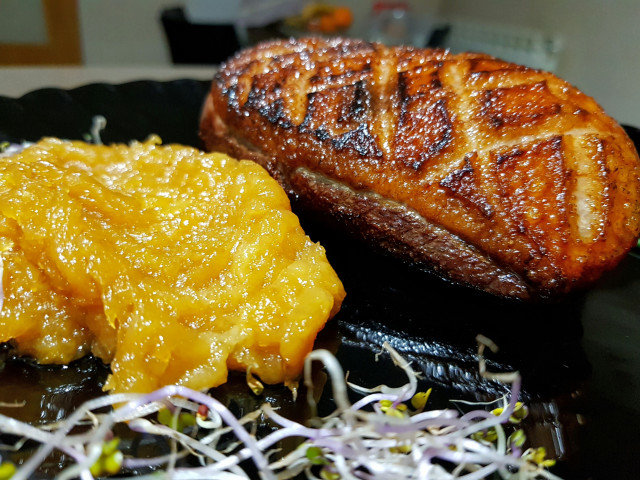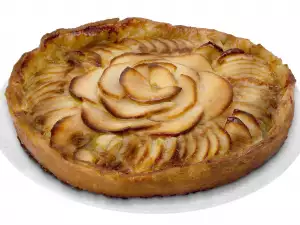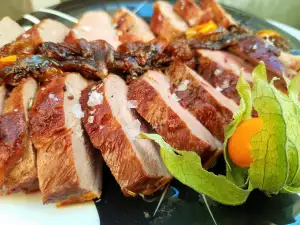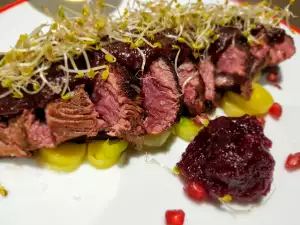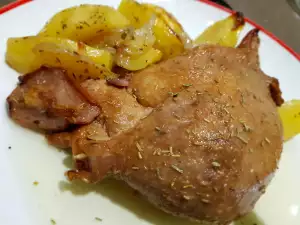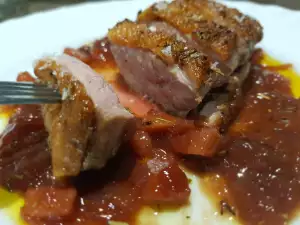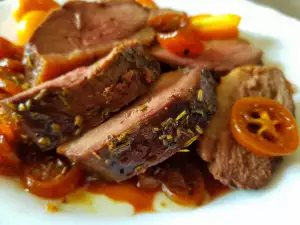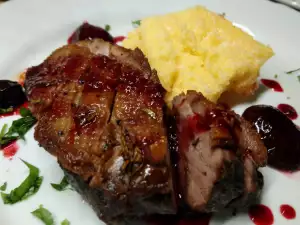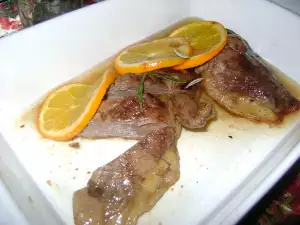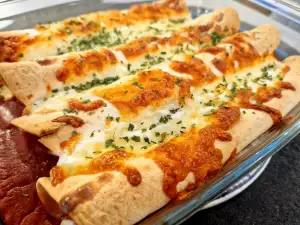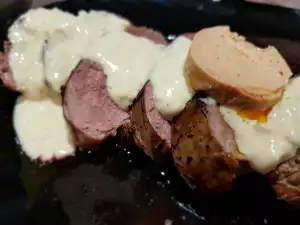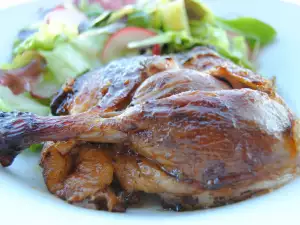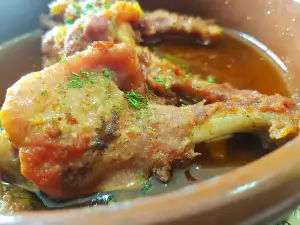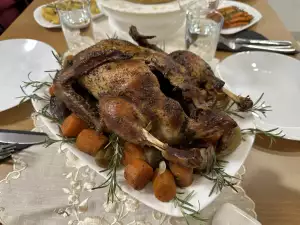How to make
Remove the duck breasts from the refrigerator and leave them at room temperature, so that they are not cold when you roast them. Meanwhile, prepare the pear garnish.
Chop the onion into bulky pieces and stew it in butter with a spoonful of olive oil. Stir at times. When it softens (about 10 minutes), add the peeled pears in pieces, split the vanilla pods lengthwise and scrape the seeds and add them to everything else. Pour the wine, a pinch of salt and cook under a lid for 30 minutes over medium heat. Stir from time to time, so that it doesn't burn the bottom and if you feel like you need to, reduce the heat.
Blend the prepared sauce. It should have a thick consistency like marmalade. Optionally add salt for a sweet and salty contrast.
Make rhomboid incisions in the skin of duck breasts without reaching the meat. Rub them with salt only on the skin side.
Heat a non-stick frying pan with a thick bottom over a high heat. Put the duck magret with the skin side down and roast it, until it aquires a dark golden brown color. Pour the separated fat into a separate container - if it is dark and burnt, throw it away, otherwise you can use it for potatoes or add some of it to the sauce.
Turn the duck and roast it, until it aquires a dark brown color on the other side, by reducing the heat by 1-2 degrees. Since a 0.9 lb (400 g) magret is also thick, you can seal it on the sides as well. It should stay pink on the inside.
Serve the duck magret with the fragrant sweet juice straight away. Quite an unusual combination, which will surprise and fascinate you!
* Before cutting the meat, leave it aside for 3-4 minutes. You can cover it, so that it does not cool down.
Sprinkle with it coarse flaky Maldon salt.
